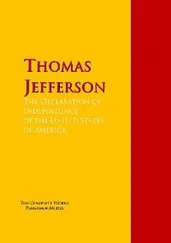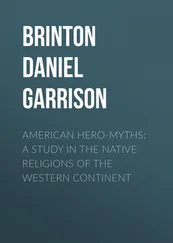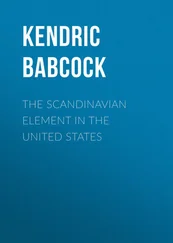Hubert Bancroft - The Native Races [of the Pacific states], Volume 5, Primitive History
Здесь есть возможность читать онлайн «Hubert Bancroft - The Native Races [of the Pacific states], Volume 5, Primitive History» — ознакомительный отрывок электронной книги совершенно бесплатно, а после прочтения отрывка купить полную версию. В некоторых случаях можно слушать аудио, скачать через торрент в формате fb2 и присутствует краткое содержание. Жанр: foreign_antique, foreign_prose, на английском языке. Описание произведения, (предисловие) а так же отзывы посетителей доступны на портале библиотеки ЛибКат.
- Название:The Native Races [of the Pacific states], Volume 5, Primitive History
- Автор:
- Жанр:
- Год:неизвестен
- ISBN:нет данных
- Рейтинг книги:5 / 5. Голосов: 1
-
Избранное:Добавить в избранное
- Отзывы:
-
Ваша оценка:
- 100
- 1
- 2
- 3
- 4
- 5
The Native Races [of the Pacific states], Volume 5, Primitive History: краткое содержание, описание и аннотация
Предлагаем к чтению аннотацию, описание, краткое содержание или предисловие (зависит от того, что написал сам автор книги «The Native Races [of the Pacific states], Volume 5, Primitive History»). Если вы не нашли необходимую информацию о книге — напишите в комментариях, мы постараемся отыскать её.
The Native Races [of the Pacific states], Volume 5, Primitive History — читать онлайн ознакомительный отрывок
Ниже представлен текст книги, разбитый по страницам. Система сохранения места последней прочитанной страницы, позволяет с удобством читать онлайн бесплатно книгу «The Native Races [of the Pacific states], Volume 5, Primitive History», без необходимости каждый раз заново искать на чём Вы остановились. Поставьте закладку, и сможете в любой момент перейти на страницу, на которой закончили чтение.
Интервал:
Закладка:
This tradition of the arrival of strangers on the eastern coast, and the growth of the Olmec and Xicalanca powers on and north of the isthmus, in view of the facts that these nations are universally regarded as Nahuas and as the first of the race to settle in Anáhuac, cannot be considered as distinct from that given by Sahagun respecting the Nahua race, especially as the latter author speaks of the departure of certain families from Tamoanchan to settle in the provinces of Olmeca Vixtoti. It is most natural to suppose that the new power extended gradually northward to Puebla as well as inland into Chiapas, where it came more directly in contact with its great rival. This view of the matter is likewise supported by the fact that Quetzalcoatl, the culture-hero, is said to have wrought his great works in the time of the Olmecs and Xicalancas – according to some traditions to have been their leader when they arrived on the coast. Sahagun also applies the name Tlalocan, 'land of riches,' or 'terrestrial paradise,' to this south-eastern region, implying its identity with Tamoanchan. 333
Our knowledge of Olmec history subsequent to their first appearance, is confined to a few events which occurred in Puebla. Here, chiefly on the Rio Atoyac near Puebla de los Angeles and Cholula, they found the Quinames, or giants, a powerful people who long kept them subordinate in rank and power, or, as the tradition expresses it, 'enslaved them.' These Quinames, as Ixtlilxochitl states, were survivors of the great destruction which closed the second age of the world. They were, according to Veytia, "more like brutes than rational beings; their food was raw meat of birds and beasts which they hunted indiscriminately, fruits and wild herbs, since they cultivated nothing; but they knew how to make pulque with which to make themselves drunk; going entirely naked with disheveled hair." They were cruel and proud, yet they received the strangers kindly, perhaps through fear of their great numbers, they being so few, and magnanimously permitted them to settle in their lands. The Olmecs were treated well enough at first, although they looked with terror upon the giants. The latter, aware of the fear they inspired, became more and more insolent, claiming that as lords and masters of the land they were showing the strangers a great favor in permitting them to live there. As a recompense for this kindness they obliged the Olmecs to serve as slaves, neither hunting nor fishing themselves, but depending on their new servants for a subsistence. Thus ill-treated, the Nahuas soon found their condition insupportable. Another great cause of offence was that the Quinames were addicted to sodomy, a vice which they refused to abandon even when they were offered the wives and daughters of the newcomers. At last it was resolved at a council of the Olmec chiefs to free themselves once for all from their oppressors. The means adopted were peculiar. The giants were invited to a magnificent banquet; the richest food and the most tempting native beverages were set before the guests; all gathered at the feast, and as a result of their unrestrained appetites were soon stretched senseless like so many blocks of wood on the ground. Thus they became an easy prey to the reformers, and perished to a man. The Olmecs were free and the day of their national prosperity dawned.
The Quinames, traditionally assigned as the first inhabitants of nearly every part of the country, have been the subject of much discussion among the Spanish writers. Veytia indeed rejects the idea that a race of giants actually existed, and Clavigero considers their existence as a race very doubtful, although admitting that there were doubtless individuals of great size. Most other writers of this class accept more or less literally the tradition of the giants who were the first dwellers in the land, deeming the discovery of large bones in various localities and the scriptural tales of giants in other parts of the world, to be sufficient corroborative authority. Veytia thinks the Quinames were probably of the same race as the Toltecs, but were tribes cast out for their sloth; Ixtlilxochitl records the opinion entertained by some that they were descended from the Chichimecs. The former fixes the date of their destruction as 107, the latter as 299, A.D. Oviedo adopts the conclusion of Mendoza that the giants probably came from the Strait of Magellan, the only place where such beings were known to exist. Boturini saw no reason to doubt the existence of the giants. Being large in stature, they could out-travel the rest of mankind, and thus became naturally the first settlers of distant parts of the world. Torquemada, followed by Veytia, identifies them with a similar race that traditionally appeared at a very early time in Peru, where they were destroyed by fire from heaven. 334
The Quinames were of course not giants, and it is not at all probable that they were savage tribes. Such tribes are described as animals rather than giants in the American traditionary annals. The spirit of the narrative, the great power ascribed to the Quinames, their kind reception of the strangers, their growing insolence, even their vices, point clearly, here as in Chiapas, to a powerful nation, at first feared as masters, then hated as rivals, but finally ruled as subjects by the newly risen power. While it is impossible to decide authoritatively in the matter, it may be regarded as more than likely that this foe was a branch of that overthrown in the south; that the Xibalban power, as well as that of the Nahuas, extended far towards Anáhuac in the early days; that the great struggle was carried on in the north as well as in the south.
About the time the Quinames were defeated, the pyramid of Cholula was erected under the direction of a chief named Xelhua. The occasion of its being built seems to have been connected in some way with a flood, probably that mentioned in the Quiché tradition, the reports of which may or may not be founded on an actual inundation more than usually disastrous in a country subject to periodical overflow. The authorities are not agreed whether the mighty mound was intended as a memorial monument in honor of the builder's salvation from a former flood, or as a place of refuge in case the floodgates of the skies should again be opened; neither is it settled whether Xelhua was an Olmec or a Quiname chieftain, although most authors incline to the former opinion. Pedro de los Rios tells us that the bricks for the construction of the pyramid were manufactured at Tlalmanalco and passed by a line of men from hand to hand for a distance of several leagues. Of course the Spanish writers have not failed to connect this pyramid in some way with the Hebrew traditions respecting the tower of Babel, especially as work on the Cholula tower was stopped by fire, sent from heaven by the irritated deities. 335
During the Olmec period, that is, the earliest period of Nahua power, the great Quetzalcoatl appeared. We have seen that in the Popol Vuh and Codex Chimalpopoca this being is represented as the half-divinity, half-hero, who came at the head of the first Nahuas to America from across the sea. Other authorities imply rather that he came later from the east or north, in the period of the greatest Olmec prosperity, after the rival Quinames had been defeated. To such differences in detail no great importance is to be attached; since all that can be definitely learned from these traditions is the facts that Quetzalcoatl, or Gucumatz, was the most prominent of the Nahua heroes, and that his existence is to be attributed to this earliest period, known in Mexico as Olmec, but without a distinctive name in the south. Quetzalcoatl was a white, bearded man, venerable, just, and holy, who taught by precept and example the paths of virtue in all the Nahua cities, particularly in Cholula. His teachings, according to the traditions, had much in common with those of Christ in the Old World, and most of the Spanish writers firmly believed him to be identical with one of the Christian apostles, probably St Thomas. During his stay in this region his doctrines do not seem to have met with a satisfactory reception, and he left disheartened. He predicted before his departure great calamities, and promised to return in a future year Ce Acatl, at which time his doctrines were to be fully accepted, and his descendants were to possess the land. Montezuma is known to have regarded the coming of Cortés and the Spaniards as a fulfillment of this prediction, and in his speech to the new-comers states further that after his first visit Quetzalcoatl had already once returned, 336and attempted unsuccessfully to induce his followers to go back with him across the sea. The first part of the prophet's prediction actually came to pass, as traditions tell us, for only a few days after his departure occurred the earthquake which destroyed the pyramid at Cholula, the American Babel, and ushered in the new or fourth age of fire, according to Ixtlilxochitl. On the ruins of the pyramid was built a temple to Quetzalcoatl, who was afterwards worshiped as a god. 337
Читать дальшеИнтервал:
Закладка:
Похожие книги на «The Native Races [of the Pacific states], Volume 5, Primitive History»
Представляем Вашему вниманию похожие книги на «The Native Races [of the Pacific states], Volume 5, Primitive History» списком для выбора. Мы отобрали схожую по названию и смыслу литературу в надежде предоставить читателям больше вариантов отыскать новые, интересные, ещё непрочитанные произведения.
Обсуждение, отзывы о книге «The Native Races [of the Pacific states], Volume 5, Primitive History» и просто собственные мнения читателей. Оставьте ваши комментарии, напишите, что Вы думаете о произведении, его смысле или главных героях. Укажите что конкретно понравилось, а что нет, и почему Вы так считаете.
![Hubert Bancroft The Native Races [of the Pacific states], Volume 5, Primitive History обложка книги](/books/749157/hubert-bancroft-the-native-races-of-the-pacific-s-cover.webp)









![Hubert Bancroft - The Native Races [of the Pacific states], Volume 1, Wild Tribes](/books/750126/hubert-bancroft-the-native-races-of-the-pacific-s-thumb.webp)

